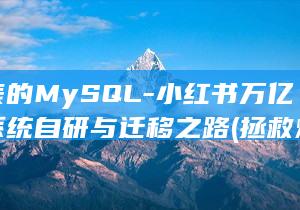简化并加速前端开发的终极利器-DaisyUI (简化并加速前进的例子)
Introduction

DaisyUI is a cutting-edge frontend tool that has captured the attention of developers worldwide. Built upon the robust foundation of TailwindCSS, DaisyUI empowers developers with an extensive suite of user-friendly UI components and utilities, enabling them to streamline their development workflow and enhance code quality.
Relationship with TailwindCSS
DaisyUI serves as anextension of the TailwindCSS framework, specifically tailored to the needs of frontend developers. It enriches the existing capabilities of TailwindCSS by expanding its functionality, providing a broader range of UI components and utility classes. In comparison to using TailwindCSS alone, DaisyUI offers significant advantages that make it an indispensable tool:
- Comprehensive UI Components: DaisyUI offers a comprehensive collection of pre-styled UI components, including buttons, forms, cards, navigation bars, and more. These components not only enhance the aesthetic appeal of interfaces but also incorporate essential features such as form validation and responsive layouts, saving developers countless hours of manual coding.
- Enhanced Utility Classes: DaisyUI extends TailwindCSS's utility class system, providing developers with a wider array of layout options and style variations. It introduces additional spacing classes, typography classes, background color classes, and more, granting developers greater flexibility in controlling the appearance and arrangement of page elements.
- Customizable Themes: DaisyUI enables developers tocustomize themes effortlessly, matching the specific design requirements of their projects. With a few simple configurations, developers can modify component colors, fonts, and other styling aspects to harmonize with the overall project aesthetic. This customization support fosters seamless collaboration between developers and designers, ensuring that design changes are implemented swiftly and efficiently.
- Seamless TailwindCSS Compatibility: DaisyUI maintains complete compatibility with TailwindCSS, allowing for seamless integration into existing TailwindCSS projects. Developers can incorporate DaisyUI's components and utilities into their ongoing projects without disrupting existing code. This compatibility empowers developers to adopt DaisyUI incrementally, leveraging its benefits without committing to a major migration undertaking.
Applications of DaisyUI
DaisyUI finds application in a diverse range of frontend development scenarios, particularly when rapid UI development is paramount. Here are some common use cases:
- Web Application Development: For development teams tasked with building cutting-edge web applications, DaisyUI is an invaluable asset. Its arsenal of components and utilities enables developers to construct UI interfaces that meet design specifications with remarkable speed, accelerating project completion timeframes.
- Prototyping: DaisyUI proves equally beneficial during the prototyping stage. Developers can leverage its components and utilities to rapidly assemble prototype interfaces, facilitating iterative feedback loops with designers and product managers. This process enhances the comprehension and validation of design requirements, minimizing communication overheads between development and design teams.
- Rapid Style Iteration: In projects where design requirements are subject to frequent revisions, DaisyUI's customizable theme support proves invaluable. Developers can swiftly adapt styles to accommodate evolving design demands. This agility in style iteration significantly reduces development delays caused by design changes.
Conclusion
DaisyUI, as a TailwindCSS-powered frontend tool, is meticulously crafted to streamline and expedite the development of web interfaces. By offering a comprehensive suite of UI components, enhanced utility classes, customizable themes, and seamless TailwindCSS integration, DaisyUI empowers developers to build modern, responsiveinterfaces with unmatched efficiency. Its wide-ranging applications, encompassing web application development, prototyping, and rapid style iteration, make it an indispensable ally for frontend developers. Embracing DaisyUI unlocks the potential for enhanced development productivity and elevated code quality, enabling developers to deliver exceptional frontend experiences.
由此面试,面试官问我,js能做什么。我知道js是干什么用的,到底js能做什么,谁能给有条理的说下?
JS = JavaScript,一种计算机脚本语言,主要在web浏览器(客户端)解释执行,由网景公司开发。 JScript是由微软公司开发的活动脚本语言,是微软对ECMAScript规范的实现。 JavaScript 是一种新的描述语言,可以被嵌入 HTML 的文件之中。 通过 JavaScript 可以做到回应使用者的需求事件 (如: form 的输入) 而不用任何的网络来回传输资料,所以当一位使用者输入一项资料时,它不用经过网络传给服务器端 (server)处理,再传回来的过程,而直接可以被客户端 (client) 的应用程序所处理.脚本语言真正面向的是特定类型问题的解决,其中主要涉及如何创建更丰富、更具有互动能力的图形用户界面(GUI)。 然而,脚本语言也许能解决客户端编程中80%的问题。 你碰到的问题可能完全就在那80%里面。 而且由于脚本编制语言的宗旨是尽可能地简化与快速,所以在考虑其他更复杂的方案之前(如Java及ActiveX),首先应想一下脚本语言是否可行。 这里主要指的是Javascript和Jscript简称JS都是因特网上最流行的网页脚本语言,前者与Java无任何关系,后者是微软开发。 它是网站前端开发必要的一种所谓的特效技术。 JS主要是做界面的.用于客户端也就是浏览器端上执行的脚本开发。 可以使网页有动态的效果(特效,如:图片、文字的滚动;层的动态切换,显示及隐藏;对html元素的操作;动态的对html内容修改;动态的修改CSS样式;实现如下拉列表的连动 等等...),可以进行表单的输入验证(如:邮箱、电话、邮编的合法性,输入内容长度及内容验证等)Javascript短小精悍, 又是在客户机上执行的,大大提高了网页的浏览速度和交互能力。 同时它又是专门为制作Web网页而量身定做的一种简单的编程语言。 JS文件只需用记事本就可打开修改,修改完成必须以JS为后缀的文件。 Javascript 是一种解释型的、基于对象的脚本语言。 尽管与 C++这样成熟的面向对象的语言相比,JScript 的功能要弱一些,但对于它的预期用途而言,JScript 的功能已经足够大了。 Javascript不是其他语言的精简版(例如,它只是与 Java 有点模糊而间接的关系),也不是任何事物的简化。 不过,它有其局限性。 例如,您不能使用该语言来编写独立运行的应用程序,并且没有对读写文件的内置支持。 此外,Javascript脚本只能在某个解释器或“宿主”上运行,如 Active Server Pages(ASP)、Internet浏览器或者 Windows脚本宿主。 Javascript 是一种宽松类型的语言。 宽松类型意味着您不必显式定义变量的数据类型。 事实上 Javascript 更进一步。 您无法在JScript上明确地定义数据类型。 此外,在大多数情况下,Javascript 将根据需要自动进行转换。 例如,如果将一个数值添加到由文本组成的某项(一个字符串),该数值将被转换为文本。
戴尔新的12G服务器上的IDRAC7卡是做什么的?
1,远程管理卡2,戴尔第12代服务器默认集成了一个远程控制卡,也就是iDRAC又称为Integrated Dell Remote Access Controller,戴尔第12代服务器配置的就是iDRAC7远程管理卡,iDRAC卡相当于是附加在服务器上的一台小电脑,通过与服务器主板上的管理芯片BMC进行通信,监控与管理服务器的硬件状态信息。 它拥有自己的系统和IP地址,与服务器上的OS无关。 是管理员进行远程访问和管理的利器。 在戴尔第12代服务器中,iDRAC的版本升级到了iDRAC 7。 iDRAC 7卡与生命周期管理控制器Lifecycle Controller 集成在一起,提供简化服务器生命周期管理。 3,戴尔第12代服务器出厂默认配置了iDRAC 7Express版,可以通过软件License的方式升级到企业版,将戴尔服务器出厂默认配置的iDRAC7 Express版远程管理卡升级到Enterprise 企业版,可以实现如远程KVM、远程安装系统等高级功能。
免责声明:本文转载或采集自网络,版权归原作者所有。本网站刊发此文旨在传递更多信息,并不代表本网赞同其观点和对其真实性负责。如涉及版权、内容等问题,请联系本网,我们将在第一时间删除。同时,本网站不对所刊发内容的准确性、真实性、完整性、及时性、原创性等进行保证,请读者仅作参考,并请自行核实相关内容。对于因使用或依赖本文内容所产生的任何直接或间接损失,本网站不承担任何责任。




